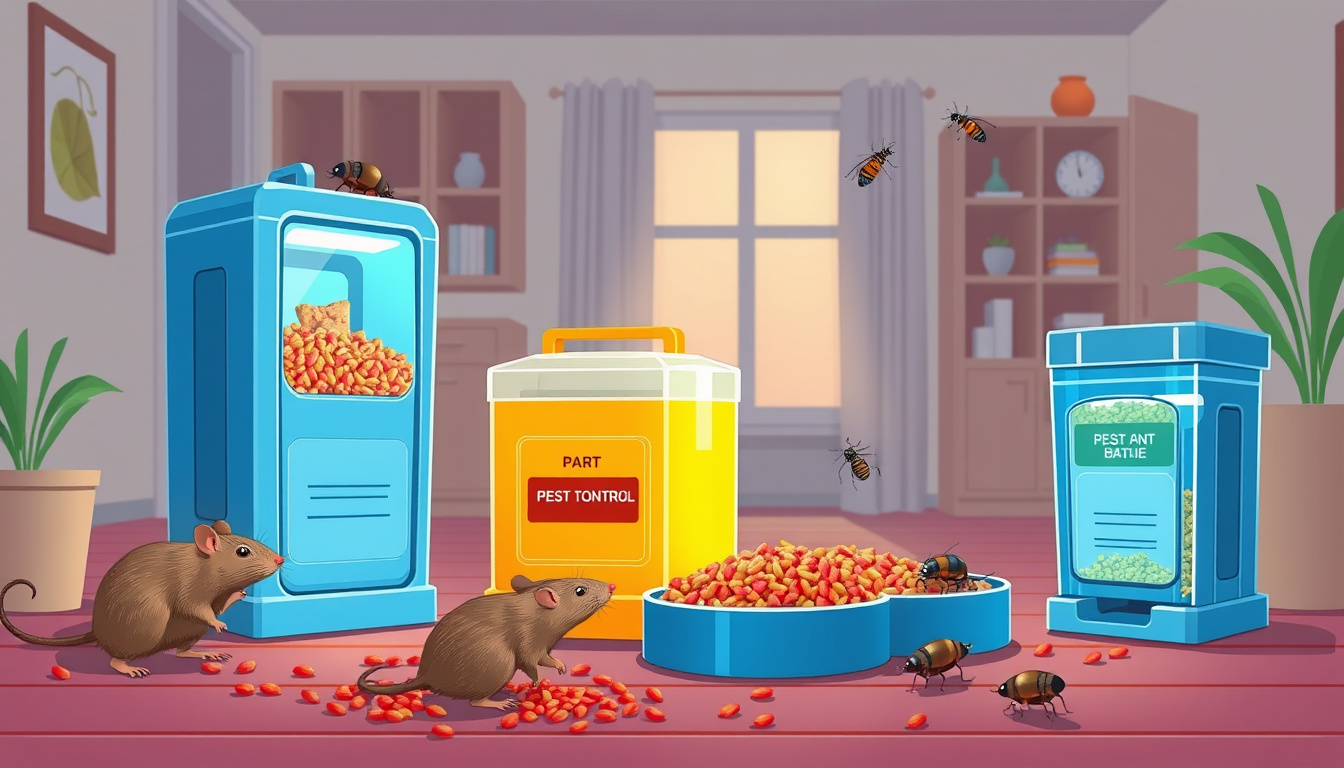
When you plan pest control for rodents and insects, your tool choice matters. The tools you pick stop pests when they work well with your plan. One strong method is the use of bait stations. This guide explains bait stations. It tells how they work, what they do well, and the best ways to use them.
What Are Bait Stations?
Bait stations are small boxes that keep rodenticides or insecticides inside. They draw pests to the bait while the poison stays away from pets and people. These boxes act as guards. Pests approach and feed, and their numbers fall.
Types of Bait Stations
In pest control, you may choose from these kinds:
-
Rodent Bait Stations:
They target rats and mice. They hold rodenticides in a way that keeps children and pets from reaching the bait. They come in many sizes and keep the poison safe. -
Insect Bait Stations:
They target ants and roaches. These boxes use scents to pull pests near. You can set them inside or outside where pests come. -
Multi-Purpose Bait Stations:
They work for both rodents and insects. They help in places where more than one kind of pest appears.
Benefits of Using Bait Stations
Using bait stations in your plan has many pros:
-
Targeted Method:
The bait stations call only the pests you want to trap. This focus lessens the chance of harming other animals. -
Safety:
The closed design cuts the risk of poison spills. Kids and pets stay safe. -
Simplicity:
The stations are easy to set up and check. You can put them at points where pests move. -
Easy Check:
Many boxes let you see the bait inside. This view helps you know if the stations work well. -
Long-Term Plan:
With steady use, bait stations can drop pest numbers over time. Your space grows less friendly to pests.
Best Practices for Using Bait Stations
Stick to these tips for best results:
-
Good Spot:
Place bait stations where you see pest action. Areas near entry points or food keep the bait close to pests. Walls and dark spots work best. -
Check Often:
Look at your stations frequently. Replace bait that is old or eaten. -
Read Guide:
Follow the maker’s rules for each station. Some stations need a set place or special bait. -
Rotate Bait:
If one bait does not work, try switching the type of bait. Over time, pests may ignore the same chemical. -
Mix Tricks:
Use traps and block entry sites along with bait stations. This mix digs into the pest problem from several sides.
Conclusion
A smart pest control plan uses bait stations as key tools against rodents and insects. The design, safety, and ease of bait stations work to lower pest numbers. By following these tips and a mix of methods, you can keep your space safe and pest-free.
For anyone who works on their pest control plan, knowing how bait stations work is a strong step. They become key tools in the fight against pests at home or work.




